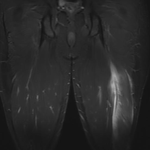INTRODUCTION
Hamstring injuries are an extremely common sporting injury. Hawkins et al. (2001) showed that hamstring injuries accounted for approximately 12% of football injuries. In certain sports, such as Australian Football, hamstring injuries have the highest incidence of any injury (Warren et al., 2010).
This means that many teams, and their sports physiotherapists, invest massive amounts of time and energy in hamstring injury prevention. This is clearly based on the adage that ‘prevention is better than cure’. It makes sense, particularly given that Gabbe et al. (2006) showed that previous history of hamstring injury was a predictor of future hamstring injury.
So the $64,000 question is how can we prevent hamstring injuries?
INTERVENTIONS TO PREVENT HAMSTRING INJURIES
Goldman and Jones (2011) performed a systematic review to identify what protocols or interventions could be successfully implemented to reduce the rates of hamstring injury among young active adults. They included 7 trials (of dubious quality) which investigated the effectiveness of the following interventions:
ECCENTRIC STRENGTHENING PROTOCOLS: There is evidence that the hamstrings are most vulnerable during late swing phase of running, when hamstring function changes from eccentric to concentric activation (Verrall et al. 2001). This makes it logical that improving the eccentric function of muscles should decrease the risk of strain. However, the study found conflicting results for the use of eccentric strengthening protocols, with no clear evidence of beneficial effect.
At this point, I feel it is important to discuss the limited methodological quality of the included studies. The results are plagued by limitations including high rates of non-compliance and unusually high control rates of injury. Read: take caution with these results…
MANUAL THERAPY TECHNIQUES: The systematic review included one unpublished and underpowered study which investigated manual therapy techniques, which included Lumbar Spine HVT’s. The study found a reduction in the risk of lower limb muscle strain in this group. Interestingly, this echoes the current clinical recommendations of ensuring full pelvic and spinal mobility in hamstring rehabilitation (Mason and Dickens, 2007).
PROPRIOCEPTIVE/NEUROMUSCULAR TRAINING: The review found no statistically significant reduction in risk of hamstring injuries following interventions aimed at improving proprioception or neuromuscular control (Goldman and Jones, 2011).
WARM UP, COOL DOWN AND STRETCHING: This intervention included education regarding appropriate warm-up and cool-down procedures and regular stretching (Van Mechelen, 1993). There was no statistically significant effect, however, you have to question the compliance with the interventions.
CLINICAL IMPLICATIONS
Whoa! This review would have you think that we cannot do anything to prevent hamstring injuries… how depressing..but wait! If I said to you that I treated all sub-acromial impingement syndrome (SAIS) patients with Thera-band rotator cuff strengthening exercises – what would you say? I would get emails left, right and centre! How can you, SAIS is multi-factorial and has many potential contributors !?!
Hamstring injuries are the same! Hamstring injuries are complex in nature, and multi-factorial in etiopathogenesis (what a great word!). I would suggest (and many would agree) that what contributes to hamstring injuries in one athlete (be it strength, muscular synergy, flexibility, lumbo-pelvic contributors, biomechanical abnormalities) would differ from another athlete. So what does this research tell me?
HAMSTRING INJURIES ARE NOT PREVENTED BY A ONE-SIZE-FITS-ALL INTERVENTION!
Quite clearly, there is no recipe here (when is there in sports physiotherapy?). Assessment based interventions are what is required, and where you should start. Interventions to prevent hamstring injury should be as individualised as the athlete themselves, then you will see success!
Rant over. What are your thoughts? Let me know in the comments or catch me on Facebook or Twitter
If you require any sports physiotherapy products be sure check out PhysioSupplies (AUS) or MedEx Supply (Worldwide)
REFERENCES
Gabbe JB, Bennell, KL, Finch, CF Wajswelner H, and Orchard JW. Predictors of hamstring injury at the elite level of Australian football. Scandinavian Journal of Medicine & Science in Sports 2006 16: 7–13
Goldman EF, Jones DE. Interventions for preventing hamstring injuries: a systematic review. Physiotherapy (2011), doi:10.1016/j.physio.2010.11.011
Hawkins RD, Hulse MA, Wilkinson C, Hodson A, Gibson M. The association football medical research programme: an audit of injuries in professional football. Br J Sports Med 2001;35:43–7
Hoskins W, Pollard H. A randomized controlled trial of manual therapy for hamstring injury prevention. Unpublished report; 2008.
Mason DL, Dickens VA, Vail A. Rehabilitation for hamstring injuries. Cochrane Database System Rev 2007;1:CD004575.
Van Mechelen W, Hlobil H, Kemper HC, Voorn WJ, Rob de Jongh H. Prevention of running injuries by warm-up, cool-down, and stretching exercises. Am J Sports Med 1993;21:711–9.
Verrall GM, Slavotinek JP, Barnes PG, Fon G, Spriggins A. Clinical risk factors for hamstring muscle strain injury: a prospective study with correlation of injury by magnetic resonance imaging. Br J Sports Med 2001;35:435–9.
Warren P, Gabbe BJ, Schneider-Kolsky M et al. Clinical predictors of time to return to competition and of recurrence following hamstring strain in elite Australian footballers. Br J Sports Med 2010 44: 415-419
Related Posts
Comments
Trackbacks
-
[…] from: Hamstring Injury Prevention | The Sports Physiotherapist ← Floorball Injury Prevention Training Program – News – Gong […]









No one size fits all??? You’re kidding me…? Glad to know it’s not just me. Nice post.
Glad to know it’s not just me. Nice post.
Yeah I know – shocking isn’t it! Thanks for the comment Shaun!
nice post, I came across it on twitter, Im looking forwad to flickong around the rest of the website.